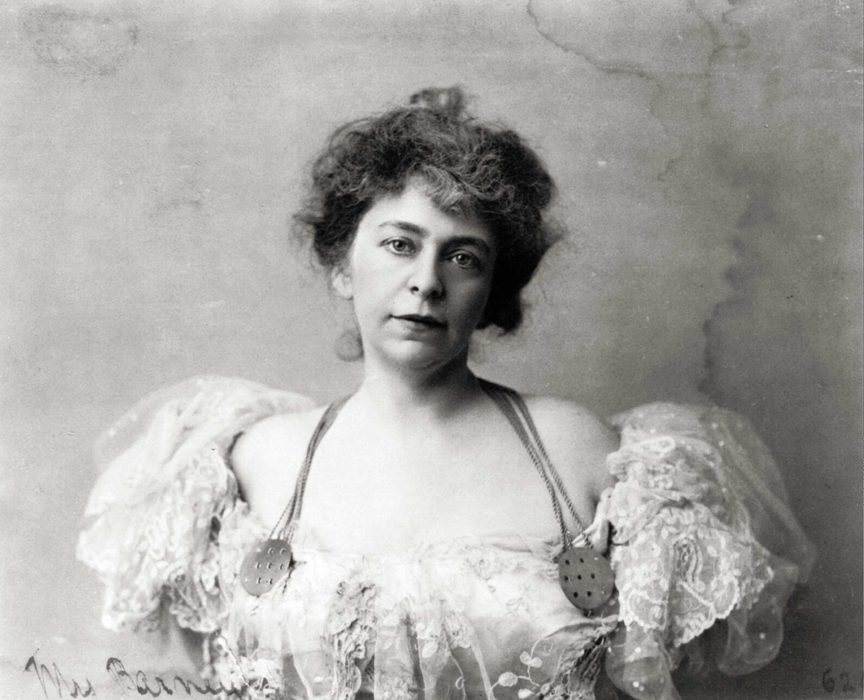THERE ARE THREE TOPICS you ought not bring up at the dinner table: religion, politics, and Washington’s Barney family. But according to an article that appeared in a Sunday edition of the New York Times in 1910, if your party of “smart set gatherers” starts to die down, dropping the Barney bombshell into the conversation might not be such a bad idea.
Everybody has an opinion on the oddball Barneys, and especially of Alice Pike Barney, the wealthy American artist who recently returned from living in Paris, where she was a student of James McNeill Whistler.
“They are poseurs,” somebody will say, “learned only in the stale devices of studied eccentricity!” Others laud the Barneys’ tendency to reject the mainstream: “It is genius scorning the narrow conventionalities of society.”
Alice Barney has committed herself to the arts, and is known as a painter, writer, theatre director, and philanthropist. When she was seventeen the explorer Henry Morton Stanley proposed marriage to her, but then he went off to Africa to find Dr. Livingstone (“Dr. Livingstone, I presume?”) and Alice decided to marry Albert Clifford Barney instead, a wealthy banker and manufacturer of railway cars from Dayton, Ohio. But he died of a heart attack in 1902, leaving Alice and her two daughters free to pursue their artistic interests unencumbered.
Two years back, the Barney women attracted national press attention after they placed a nude statue shipped from Paris in front of their house in Sheridan Circle. Washington’s chief of police eventually ordered it covered with a sheet.

On ‘Abdu’l-Bahá’s second day in Washington he spoke to a group of children who visit Alice’s “Studio House” every weekend for Sunday classes. She had designed it years before, to showcase artifacts she had collected during her travels. Its Spanish Mission façade jumps out, in true Barney fashion, from the Beaux Arts style of the surrounding buildings. Tiger and bear pelts, mouths agape, are spread on the tiled floor. The columns in the first floor reception room bear bunches of carved grapes; the textures and colors of the fabrics are a feast for little hands and eyes. But perhaps the most surprising detail is what the house lacks: neither a bed nor a closet can be found in it.
But although the press knows Mrs. Barney primarily for her bizarre tastes, the Times also writes about her “deep sympathy with human kind.” The Studio House is not the only building in which Mrs. Barney has crystallized her ideals. Today, on May 10, 1912, ‘Abdu’l-Bahá will visit a settlement house that she established in 1901. The settlement movement in America aimed to improve the lives of the urban poor. It is here that Alice Barney applies her many talents, teaching sculpture, theatre, painting, and other arts to assist Washington’s less fortunate.

A century later, the Barney Settlement House still serves the citizens of DC: www.barneynh.org






